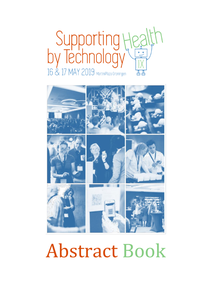Occupational stress can cause all kinds of health problems. Resilience interventions that help employees deal with and adapt to adverse events can prevent these negative consequences. Due to advances in sensor technology and smartphone applications, relatively unobtrusive self-monitoring of resilience-related outcomes is possible. With models that can recognize intra-individual changes in these outcomes and relate them to causal factors within the employee’s own context, an automated resilience intervention that gives personalized, just-in-time feedback can be developed. The Wearables and app-based resilience Modelling in employees (WearMe) project aims to develop such models. A cyclical conceptual framework based on existing theories of stress and resilience is presented, as the basis for the WearMe project. The included concepts are operationalized and measured using sleep tracking (Fitbit Charge 2), heart rate variability measurements (Elite HRV + Polar H7) and Ecological Momentary Assessment (mobile app), administered in the morning (7 questions) and evening (12 questions). The first (ongoing) study within the WearMe project investigates the feasibility of the developed measurement cycle and explores the development of such models in social studies students that are on their first major internship. Analyses will target the development of both within-subject (n=1) models, as well as between-subjects models. The first results will be shared at the Health By Tech 2019 conference in Groningen. If successful, future work will focus on further developing these models and eventually exploring the effectiveness of the envisioned personalized resilience system.

The aim of this study was to investigate changes in heart rate during submaximal exercise as an index of cardiovascular function in older adults participating in the Groningen Active Living Model recreational sports programme who were sedentary or underactive at baseline. A repeated measurement design was conducted; 151 participants were included, providing 398 heart rate files over a period of 18 months. Multi-level analyses were conducted; growth and final models were developed. Significant decreases in mean heart rate over time were observed for all walking speeds. The covariates of sex and body mass index (BMI) were significantly related to mean heart rate at each walking speed, except for BMI at 7 km/h. No significant relationships were observed between energy expenditure for recreational sports activities and leisure-time physical activities and mean heart rate, except for energy expenditure for leisure-time physical activities at 7 km/h. From baseline to December 2002, decreases in predicted mean heart rate were 5.5, 6.0, 10.0, and 9.0 beats/min at walking speeds of 4, 5, 6, and 7 km/h; relative decreases ranged from 5.1 to 7.4%. Significant decreases in heart rate observed during submaximal exercise reflected a potential increase in cardiovascular function after 18 months of participation in the Groningen Active Living Model recreational sports programme.DOI:10.1080/02640410903008749

Rationale To improve the quality of exercise-based cardiac rehabilitation (CR) in patients with chronic heart failure (CHF) a practice guideline from the Dutch Royal Society for Physiotherapy (KNGF) has been developed. Guideline development A systematic literature search was performed to formulate conclusions on the efficacy of exercise-based intervention during all CR phases in patients with CHF. Evidence was graded (1–4) according the Dutch evidence-based guideline development criteria. Clinical and research recommendations Recommendations for exercise-based CR were formulated covering the following topics: mobilisation and treatment of pulmonary symptoms (if necessary) during the clinical phase, aerobic exercise, strength training (inspiratory muscle training and peripheral muscle training) and relaxation therapy during the outpatient CR phase, and adoption and monitoring training after outpatient CR. Applicability and implementation issues This guideline provides the physiotherapist with an evidence-based instrument to assist in clinical decision-making regarding patients with CHF. The implementation of the guideline in clinical practice needs further evaluation. Conclusion This guideline outlines best practice standards for physiotherapists concerning exercise-based CR in CHF patients. Research is needed on strategies to improve monitoring and follow-up of the maintenance of a physical active lifestyle after supervised CR.
